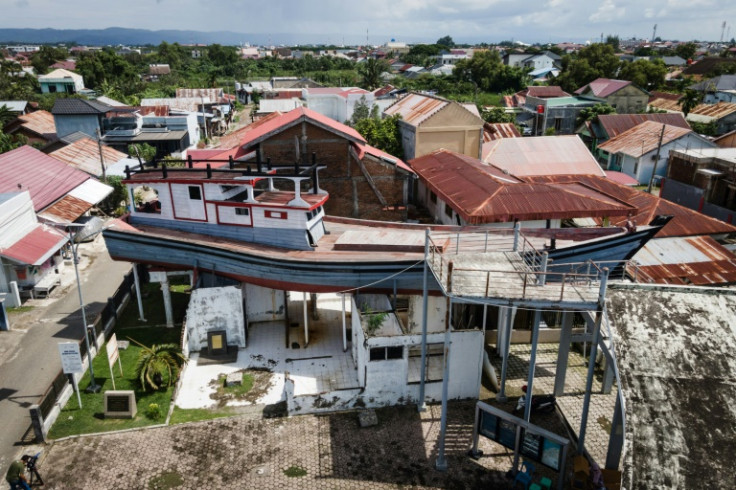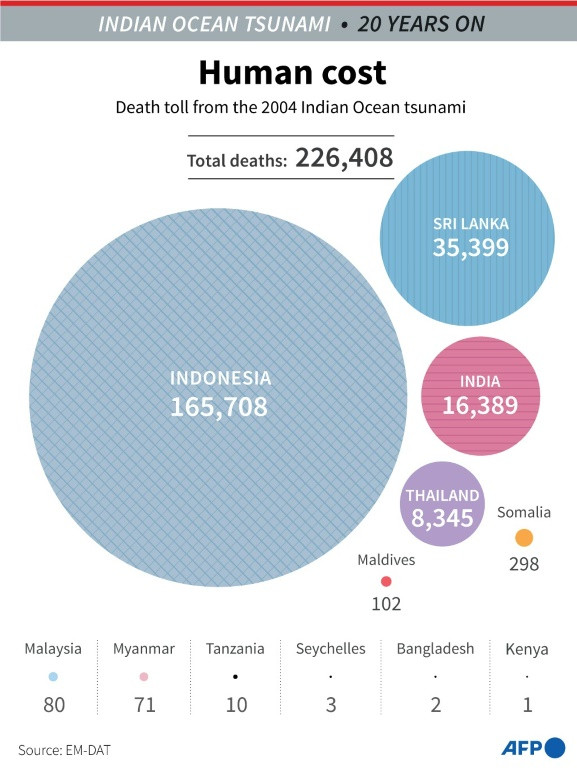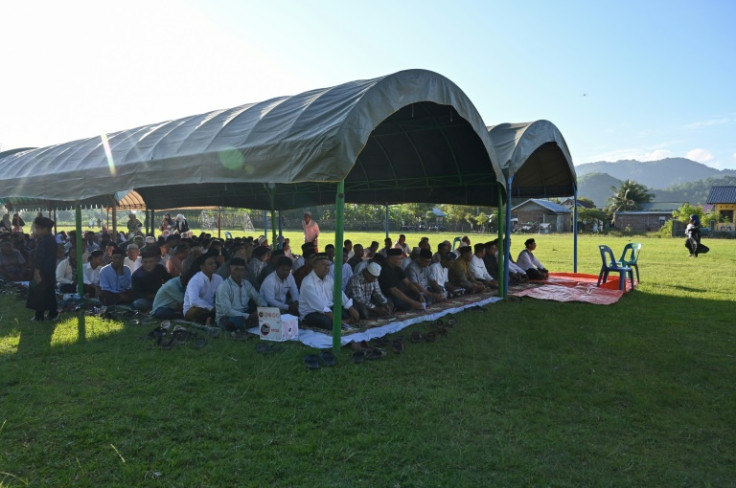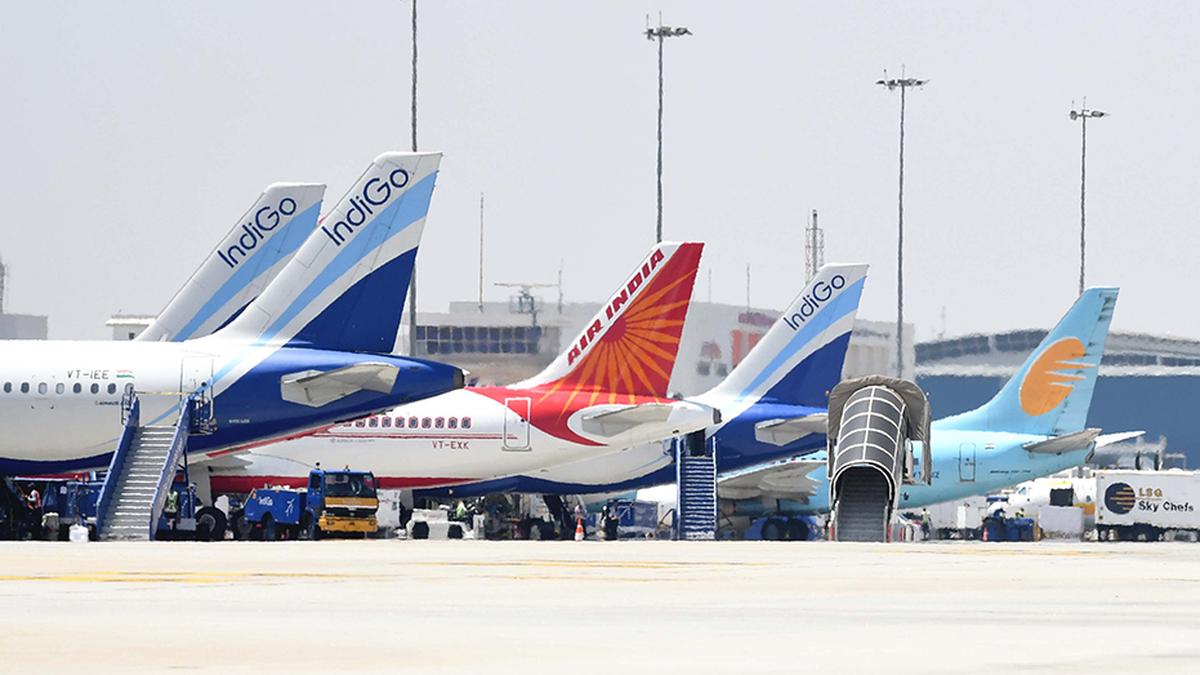Tearful mourners prayed and lit candles Thursday at ceremonies across Asia to remember the 220,000 people killed two decades ago when a tsunami hit coastlines around the Indian Ocean in one of the world’s worst disasters.
A 9.1-magnitude earthquake off Indonesia’s western tip on December 26, 2004, generated a series of waves as high as 30 metres (98 feet) that pummelled the coastline of 14 countries from Indonesia to Somalia.
In Indonesia’s Aceh Province, where more than 100,000 people were killed, a siren rang out at the Baiturrahman Grand Mosque to kick off a series of memorials around the region, including in Sri Lanka, India and Thailand, which the tsunami hit hours later.
People recounted harrowing tales of horror and miraculous survival as giant waves swept in without warning, carrying debris including cars and destroying buildings in their wake.
“I thought it was doomsday,” said Hasnawati, a 54-year-old teacher who goes by one name, at the Indonesian mosque that was damaged by the tsunami.
“On a Sunday morning, where our family were all laughing together, suddenly a disaster struck and everything was gone. I can’t describe it with words,” she told AFP.
At Aceh’s Siron mass grave, where around 46,000 people were buried, emotional relatives recited Islamic prayers in the shade of trees that have since grown there.
Khyanisa, a 59-year-old Indonesian housewife, lost her mother and daughter, searching in vain for them in the hope they were still alive.
“I kept chanting God’s name. I looked for them everywhere,” she said.
“There was a moment where I realised they were gone. I felt my chest was in pain. I screamed.”
The victims included many foreign tourists celebrating Christmas on the region’s sun-kissed beaches, bringing the tragedy into homes around the globe.
The seabed being ripped open pushed waves at double the speed of a bullet train, crossing the Indian Ocean within hours.
In Thailand, where half of the more than 5,000 dead were foreign tourists, commemorations included tearful relatives laying flowers and wreaths at a wave-shaped wall in Ban Nam Khem, its worst-hit village.
Napaporn Pakawan, 55, lost her older sister and a niece in the tragedy.
“I feel dismay. I come here every year,” she told AFP.
“Times flies but time is slow in our mind.”
A candlelight vigil on the beach at Khao Lak organised by the Swedish embassy in Thailand drew a crowd of around 100, the majority Swedes. Sweden was one of the worst affected countries by proportion of population.
Anna Elf, 50, said she brought her children there because it was “important for them to know what happened” on that day.
“In Sweden everyone knows somebody who was affected or who lost somebody… it’s kind of like a national trauma,” she said.
A total of 226,408 people died as a result of the tsunami, according to EM-DAT, a recognised global disaster database.
There was no warning of the impending tsunami, giving little time for evacuation, despite the hours-long gaps between the waves striking different continents.
But today a sophisticated network of monitoring stations has quickened warnings.
In Sri Lanka, where more than 35,000 people perished, survivors and relatives gathered to remember around 1,000 victims who died when waves derailed a passenger train.
The mourners boarded the restored Ocean Queen Express and headed to Peraliya — the exact spot where it was ripped from the tracks, around 90 kilometres (56 miles) south of Colombo.
A brief religious ceremony was held with relatives of the dead there while Buddhist, Hindu, Christian and Muslim ceremonies were also organised to commemorate victims across the South Asian island nation.
Nearly 300 people were killed as far away as Somalia, as well as more than 100 in the Maldives and dozens in Malaysia and Myanmar.
Dorothy Wilkinson, a 56-year-old British woman who lost her partner and his parents to the tsunami in Thailand, said the commemorations were a time to remember the best of those who died.
“It makes me happy to come… a bit sad,” she said.
“It’s celebrating their life.”

AFP

AFP

AFP

AFP








Leave a Comment